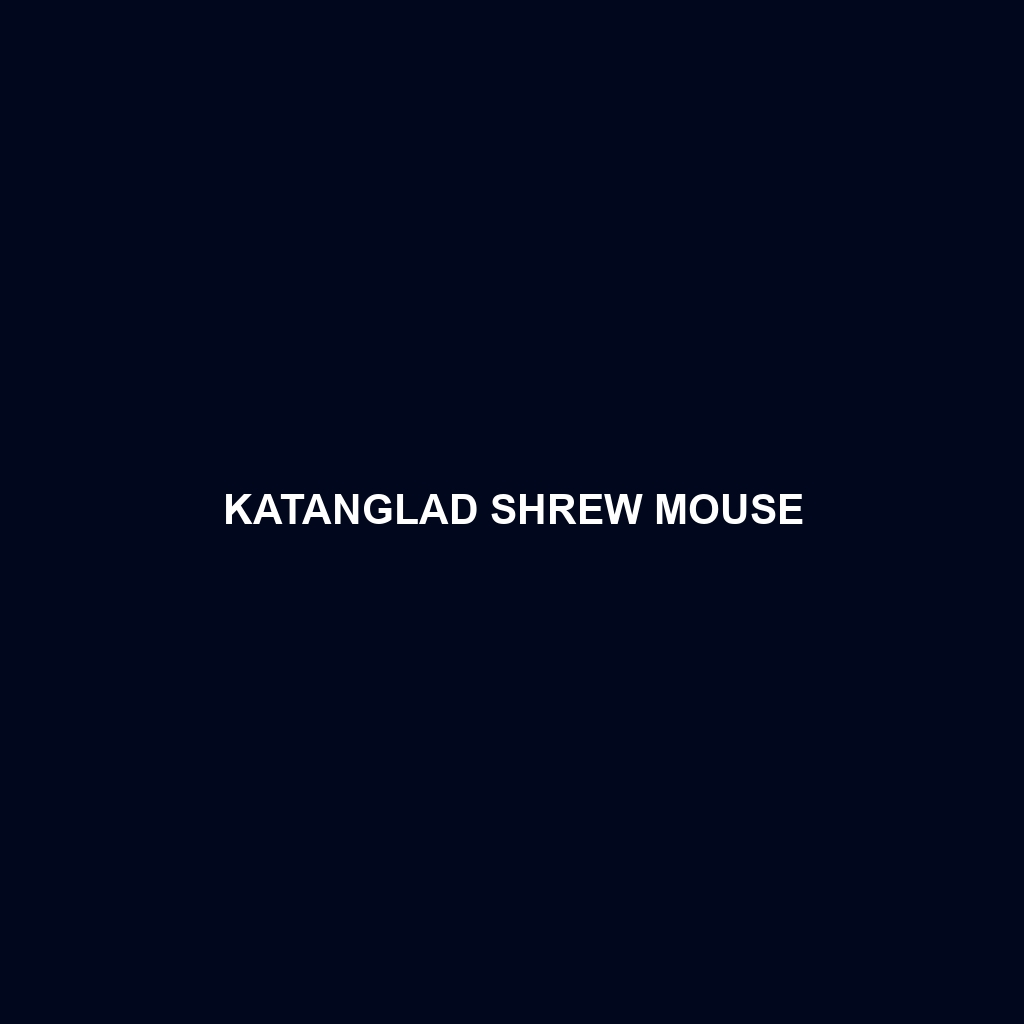Common Name: Katanglad Shrew Mouse
Scientific Name: Chrotomys gonzalesi
Habitat:
The Katanglad Shrew Mouse is primarily found in the mountainous regions of the Philippines, particularly in the Mount Kitanglad Range located in Mindanao. This species thrives in tropical forests characterized by rich biodiversity and a humid environment, typically at elevations ranging from 1,200 to 2,600 meters above sea level.
Physical Characteristics:
This small rodent measures approximately 15 to 20 centimeters in length, excluding its tail, which is relatively long and aids in balance. The Katanglad Shrew Mouse possesses a mix of brown and gray fur, providing effective camouflage among the forest underbrush. Its distinctive sharp snout and long whiskers are adapted for foraging in the leaf litter, while large, sensitive ears help detect predators.
Behavior:
The Katanglad Shrew Mouse is primarily nocturnal, engaging in most of its activities at night. During the day, it stays hidden in dense vegetation and tree roots. This species is known for its solitary behavior, often establishing small territories it actively defends from intruders. Its agility allows it to navigate through the forest floor quickly, which is essential for avoiding predators.
Diet:
As an omnivore, the Katanglad Shrew Mouse has a diverse diet consisting primarily of insects, fruits, and seeds. It is particularly fond of small invertebrates, which it captures using its keen sense of smell. The consumption of fallen fruits contributes to seed dispersal within its habitat, highlighting its role in the ecosystem.
Reproduction:
The reproductive habits of the Katanglad Shrew Mouse involve a breeding season typically during the rainy months. Females can give birth to litters containing up to three to four offspring, which are weaned and become independent at around four weeks old. The nurturing of the young primarily falls to the female, who creates nests from leaves and other plant materials to provide shelter.
Conservation Status:
While the Katanglad Shrew Mouse is not currently classified as endangered, it is considered vulnerable due to habitat loss from deforestation and agricultural expansion in the region. Conservation efforts are crucial to protect its habitat and ensure the survival of this unique rodent species.
Interesting Facts:
Despite its small size, the Katanglad Shrew Mouse plays a critical role in maintaining the ecological balance of its habitat. It has adapted well to its environment, making it a fascinating subject for research. Additionally, it is believed that this species exhibits complex vocalizations to communicate with others, which is rare among rodents.
Role in Ecosystem:
The Katanglad Shrew Mouse serves several ecological roles, such as contributing to soil aeration through its burrowing habits and acting as a prey species for larger predators in the ecosystem. Its feeding habits also play a part in seed dispersal, promoting forest regeneration and biodiversity.
